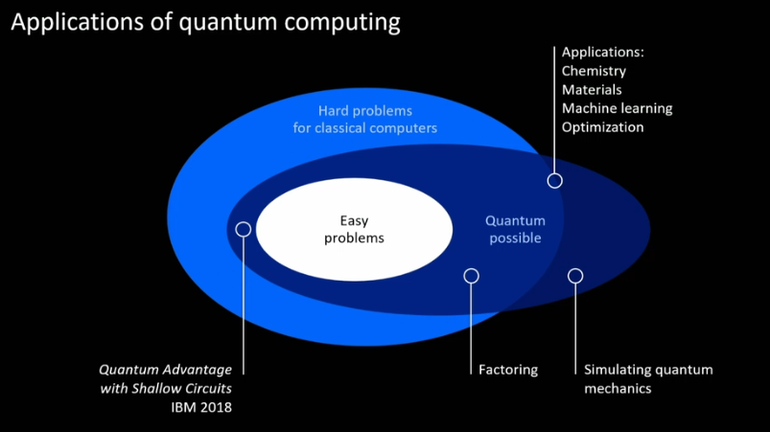Q Network users are studying carbon chemistry, route optimization, and risk analysis on IBM's quantum computer.
This device is unable to play the requested video.
IBM research director Dario Gil started his session at CES 2020 with a science lesson to explain the basics of quantum computing. He hit the highlights of superposition, interference, and entanglement.
After this primer, Gil said that the promise of quantum computing is that it offers the power to model natural processes and understand how they work.
"Quantum is the only technology we know that alters the equation of what is possible to solve versus impossible to solve," he said.
SEE: CES 2020: The big trends for business (ZDNet/TechRepublic special feature)
Jeannette Garcia, senior manager for quantum applications algorithms and theory at IBM Research, shared some of the real-world problems that IBM is working on:
- Improved nitrogen-fixation process for creating ammonia-based fertilizer
- New classes of antibiotics to counter multidrug-resistant bacteria
- New polymers that could replace steel-based components
- New electrolytes for lithium-air batteries for electric airplanes
Garcia's focus is battery research, which is also the topic of a new IBM partnership with Daimler. She said researchers are using quantum computing to figure out quantum chemistry.
"We are looking at the fundamental behavior of atoms on a molecular scale," she said.
Q Network by the numbers
IBM launched the Q Network a year ago and the growth has been impressive:
- 15 deployed quantum computers
- 200,000 registered users
- 150 billion executions
- 200 scientific publications
- 100 commercial partners, including several announced at CES 2020
Gil said that the numbers show that people want access to quantum hardware. Users in the IBM Q network are studying these topics:
- Advanced battery materials and structures
- Materials for semiconductor manufacturing
- Aspects of carbon chemistry in petrochemicals
- Manufacturing defect identification
- Maritime routing optimization
- Risk analysis and options pricing
Gil said that it's easy to print more qubits, the hard part is making the interactions among qubits high quality. IBM reports that researchers are making progress on that metric as well.
Quantum volume is a metric that incorporates the number of qubits and the error rate of interactions. IBM has doubled the quantum volume of the system every year, with the latest improvement increasing the current volume to 32.
"This is the fourth time we doubled the quantum volume of a quantum computer," he said.
"We call this Gambetta's Law after our head of science and technology who came up with the methodology of measuring the power of quantum computing," he said.
Gil said that the "quantum ready" era
started in 2016 and the next phase will start when the technology
improves enough to achieve "quantum advantage."
"First, a whole generation of developers is going to need to learn how
to program these computers," he said. "Then when we hit quantum
advantage, we'll be able to solve real-world problems and it's
absolutely going to happen this decade."
For more CES 2020 coverage, check out this list of the top products of CES 2020.
Also see
- CES 2020 roundup: All the business tech news you need to know (TechRepublic)
- 2020 Tech conferences and events to add to your calendar (free PDF) (TechRepublic download)
- 2020 IT budget research report: Security, cloud services, and digitalization are top budget priorities (TechRepublic Premium)
- CES 2020 and beyond: What to expect (ZDNet)
- Photos: All the cool new gadgets at CES 2020 (CNET)
- CXO: CES 2020: More must-read coverage (TechRepublic on Flipboard)

At CES 2020, IBM research director Dario Gil gave the audience a primer on quantum computing and predicted that the industry will achieve quantum advantage this decade.









